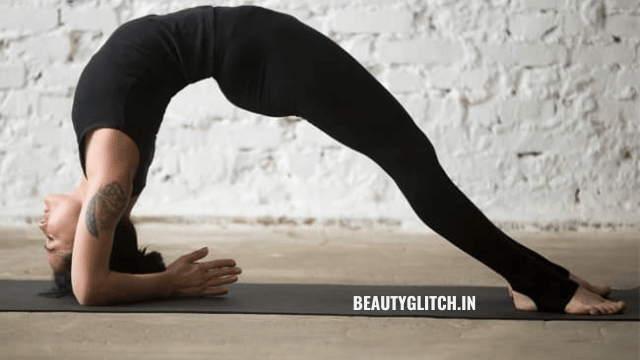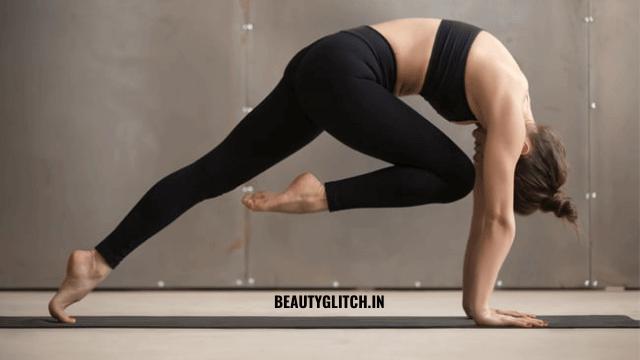As we continue our series of exploring the ancient knowledge of the seers of Yoga, Ashtanga Yoga is the newest addition to the list! Embrace the goodness of variations of Power Yoga Ashtanga with our guide and watch your mind and soul get elevated with the power of Yoga and meditation.
What is Ashtanga Yoga?
Ashtanga Yoga is one of the most dynamic forms of Yoga for well-being.
- An Ashtanga practice can produce results much faster than other branches of Yoga.
- An Ashtanga Asana might seem intimidating, but it can lead to a much better lifestyle if practiced religiously.
- When it comes to Yoga India has been the forerunner.
- Yoga in India has its roots from the Vedic ages.
- Ashtanga Yoga asanas were popularized in the United States by K Pattabhi Jois and his Mysore school.
- Of all the types of Yoga, Ashtanga is special as the name literally means ‘Eight-limbed’ Yoga, which includes:
- Yama – moral codes
- Niyama – self-purification and study
- Asana – posture
- Pranayama – breath control
- Pratyahara – sense control
- Dharana – concentration
- Dhyana – meditation
- Samadhi – absorption into the Universal
- Pranayam, or breathing control is a very important part of Ashtanga Yoga asanas.
- To become a true master of Ashtanga and to become a Yoga instructor, one must learn the art of Pranayama and other Ashtanga Yoga postures.
Where Can I Learn Ashtanga Yoga?

You can always visit an Ashtanga Yoga retreat center or a Guru to learn an Ashtanga Yoga sequence.
- Usually, Ashtanga Yoga practice is best taught by a seasoned instructor, at an Ashtanga Yoga workshops or an Ashram.
- Once you master the Ashtanga Yoga poses under a Guru’s supervision, you can continue the Ashtanga Yoga routine at home, combined with Ashtanga Yoga breathing.
- You can mix traditional steps with Ashtanga power Yoga for improved results.
- You can find Yoga classes nearby with local Yoga classes. Temples and Yoga centers usually conduct free Yoga classes.
- If you are interested in teaching Ashtanga Vinyasa Yoga or Patanjali Yoga, you can undergo Ashtanga Yoga teacher training with Yoga certification programs or Yoga certification online to teach beginners Yoga or power Yoga poses.
- You can also undertake Yoga training courses under a registered practitioner and spread the art.
- Another option available today is online Yoga courses and free Yoga videos, which can be one-on-one or grouped.
- Beginners Yoga Courses are available easily today, which can be incorporated into an Ashtanga Yoga video and some Patanjali Ashtanga Yoga techniques.
How Can I Try Ashtanga Yoga at Home?
Ashtanga poses come under sets. Each set must be mastered gradually and proceeded with.
- It is important to follow Ashtanga primary poses and then move on to the subsequent set.
- Ashtanga breathing is also very important, to establish a relationship between all the ‘Angas’.
- We recommend that you make an Ashtanga Yoga chart with all relevant Ashtanga Yoga information so that you can easily memorize the Ashtanga Yoga steps for a successful routine and a perfect Ashtanga Yoga body.
- There are different Ashtanga series, which can be grouped into various sets like Ashtanga Yoga Series 1 – The Surya Namaskar, Ashtanga Yoga series 2 and so on.
- Yoga posture is very important while practicing Ashtanga, even during Yoga in pregnancy.
- Basic Yoga poses can be followed by breathing techniques and Bandhi, which refers to the contraction of the perineum to stop the flow of energy outside the body.
Some other Yoga types that you can try at home are Kundalini Yoga and Hatha Yoga, which are extremely beneficial for the mind and body.
What are Some Mantras I Can Recite?
In traditional Ashtanga series, the practice begins with a traditional Mantra saluting the Eternal Being and Patanjali (ancient Indian scholar and philosopher; considered to be the founder of yoga) for the different types of Ashtanga Yoga.
Vande gurūṇāṁ caraṇāravinde saṁdarśita svātma sukhāvabodhe
niḥśreyase jāṅ̇galikāyamāne saṁsāra hālāhala mohaśāntyai
ābāhu puruṣākāraṁ śaṅ̇khacakrāsi dhāriṇam
sahasra śirasaṁ śvetam praṇamāmi patañjalim
The translated version reads:
I bow to the lotus feet of the gurus,
The awakening happiness of one’s own self revealed,
Beyond better, acting like the jungle physician,
Pacifying delusion, the poison of Samsara.
Taking the form of a man to the shoulders,
Holding a conch, a discus, and a sword,
One thousand heads white,
To Patanjali, I salute.
The practice ends with the Mangala Mantra:
Svastiprajābhyaḥ paripālayantāṁ nyāyena mārgeṇa mahīṁ mahīśāḥ
gobrāhmaṇebhyaḥ śubhamastu nityaṁ lokāḥ samastāḥ sukhinobhavantu
This is translated into English as:
May all be well with mankind,
May the leaders of the Earth protect in every way by keeping to the right path.
May there be goodness for those who know the Earth to be sacred.
May all the worlds be happy.
Most Popular Ashtanga Vinyasa Pose Sequence
One of the most popular pose sequences in Ashtanga yoga is the Surya Namaskara or the Sun Salutation. It is best practiced during the morning on an empty stomach, preferably during sunrise, in an open space.
12 Poses of the Surya Namaskar:
Follow the sequence of 12 poses below to gain the benefits of the Surya Namaskar. Although there are many sequences, this is the easiest and most effective.
1. Pranamasana (Prayer Pose)
Stand straight at the edge of your mat with your palms joined in front of your chest.
2. Hastauttanasana (Raised Arms Pose)
Lift your arms up and behind your head. May sure you get a proper stretch.
3. Hasta Padasana (Hand to Foot Pose)
Bend forward until you’re touching your feet or the floor. Try to let your head touch your knees without bending your knees.
4. Ashwa Sanchalanasana (Equestrian Pose)
Take one leg behind you, as far as possible, and allow the knee to touch the floor.
5. Kumbhakasana (Plank Pose)
Take your other leg behind as well as your knees raise off the mat. Come into an arm standing plank pose.
6. Ashtanga Namaskara (Salute With Eight Parts Or Points)
Bring your knees and chin and neck to the floor. Do not lower your hips.
7. Bhujangasana (Cobra Pose)
In a sliding motion bring your torso to rest on the mat while your hands support our upper body while you get a good stretch in your back.
8. Adho Mukha Svanasana (Downward-Facing Dog Pose)
Lift your hips into the air until only your palms and feet are touching the floor. You should be forming an inverted ‘V’.
9. Ashwa Sanchalanasana (Equestrian Pose)
Bring one foot forward and come back into pose 4. Push your hip down for a better stretch.
10. Hasta Padasana (Hand to Foot Pose)
Bring your other foot forward and move into pose 3.
11. Hastauttanasana (Raised Arms Pose)
Slowly unwind, stacking your spine as you move to bring your hands above your hand and back.
12. Pranamasana (Prayer Pose)
Finish your sequence as you come back to the prayer pose.
What Do I Need to Try this at Home?
Ashtanga yoga can be practiced in the comfort of your home with a few basic Yoga accessories. Go through our hand-picked recommendations and pick out the best for you today!
1. Yoga Mat
A Yoga session is incomplete without a Yoga mat. It is the primary thing you need for comfort and ease for your Yoga lessons.
2. Yoga Blankets
If you feel a Yoga mat is too bulky for you to carry, opt for Yoga blankets, made of great fabric for extra comfort and versatility.
3. Yoga Bag
You can also opt for a Yoga bag to house your Yoga gear, to look effortlessly classy on the move with your Yoga supplies.
4. Yoga Clothes
One of the most important things for a successful Patanjali Yoga practice is wearing gentle Yoga attire. Throw away those stuffy garments and float with cotton and linen as your Yoga set go-to’s! You can also try Yoga pants. Attire for Yoga for men can include vests, shorts, Kurtas or trousers, while women can wear comfortable pants and tank tops or vests.
5. Yoga Towel
Set aside a plush towel just for your Yoga lessons. This can prove useful to wipe away the sweat, and also act as a cushion for poses where you need to bend.
6. Yoga Blocks
These can make Yoga for children fun! Practice Asanas with these contraptions and make your practice super easy. Engage with a Yoga workshop or learn Yoga online using Yoga blocks. Such instruments are also recommended for Yoga for pregnant women.
7. Yoga Bolster
This is another variant of the block, this pillow provides some cushiony comfort to get that bend just right!
8. Yoga CD
You can get Yoga information immediately with the help of useful Yoga CDs. These CDs are created by experts, and contain Asanas and steps in a Yoga for home basis. Such CDs are also linked to online Yoga classes that teach Yoga for beginners and move up the ladder gradually.
An Ashtanga Yoga DVD is useful for Yoga training as it is explanatory, to teach Ashtanga Flow Yoga and other aspects of Yoga flow. Try them yourself and let us know if they’re of help!
Ashtanga Yoga can be very rewarding as it consists of both gentle Yoga poses and Ashtanga Yoga basics. Ashtanga Yoga at home can be one of the most engaging Yoga for kids; it can be inculcated from the womb with Yoga during pregnancy, but one must consult a general practitioner before attempting practices. Explore the benefits of Yoga today!

